Ever been invited to a Renaissance faire or medieval-themed party and thought, “What on earth am I gonna wear?” Trust me, your not alone. The world of medieval fashion is vast and sometimes bewildering, but it’s also incredibly rich with possibilities that can transform you into nobility, a cunning rogue, or a mystical forest dweller from centuries past.
I’ve spent years researching historical costumes and attending medieval events, and lemme tell you there’s something magical about stepping into clothes from another time. It changes how you carry yourself. How you interact. It’s like time travel without the paradoxes.
In this guide, I’m sharing 17 medieval outfit ideas that’ll definitely turn heads at your next themed event. These aren’t just costumes they’re portals to another era.
1. Classic Noble Lady
Nothing says medieval elegance like a noble lady’s attire. The cornerstone? A flowing gown with bell sleeves. Opt for rich jewel tones like burgundy, emerald, or sapphire blue. These colors weren’t just pretty they were expensive and signified status.
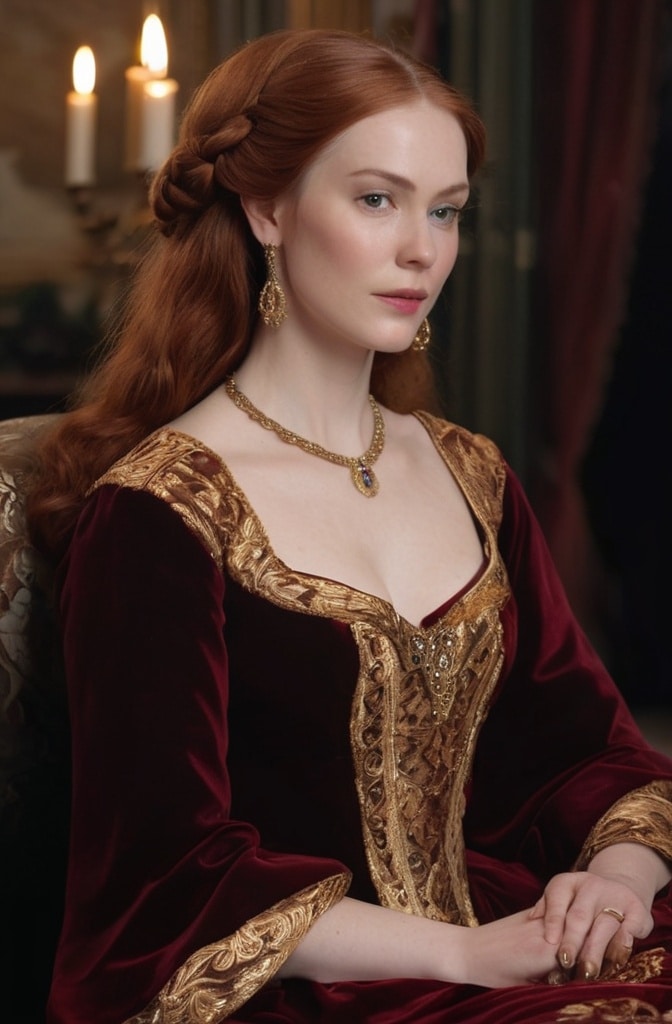
The key is layering. Start with a chemise (a simple white underdress), add your colored gown over it, and cinch with a decorative belt that hangs low on the hips. Completing the look requires a simple circlet or flowered wreath for your hair.
Don’t bother with too many accessories; medieval nobles understood the power of quality over quantity.
For authenticity points, choose natural fabrics like linen, wool, or if your feeling fancy, velvet. Synthetic materials scream “costume shop” rather than “court of Camelot.”
2. Woodland Archer
Channel your inner Robin Hood with this practical yet striking ensemble. Begin with fitted leggings or breeches in earth tones think forest green, brown, or gray. These colors helped actual forest-dwellers blend into their surroundings.
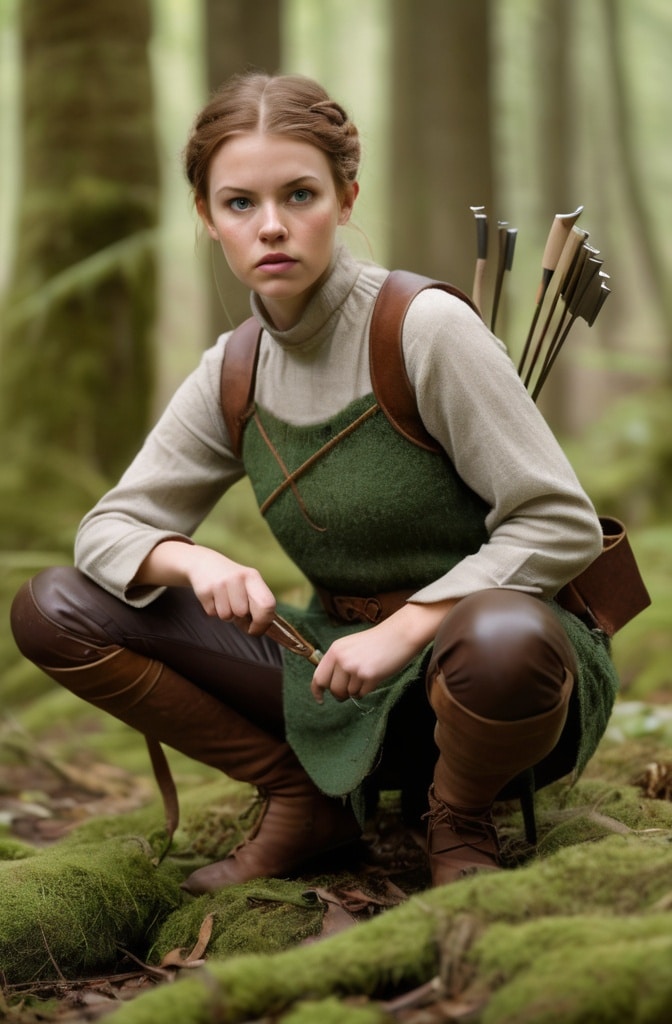
Top with a simple tunic that hits mid-thigh, and secure it with a wide leather belt. The belt isn’t just decorative; it’s where you’d hang your pouches, knife, and other essentials. Add a hooded cloak for those cool forest mornings and dramatic entrances.
Footwear matters here avoid modern shoes at all costs. Leather boots or simple cloth shoes wrapped with leather strips (called “turnshoes”) will elevate the entire outfit.
This look works amazing for people of any gender and gives you freedom to move, dance, and engage in whatever medieval mischief you please.
3. Merchant Class Sophisticate
Not all medieval folk were royalty or outlaws. The merchant class had some of the most interesting fashion, balancing practicality with displays of their growing wealth.
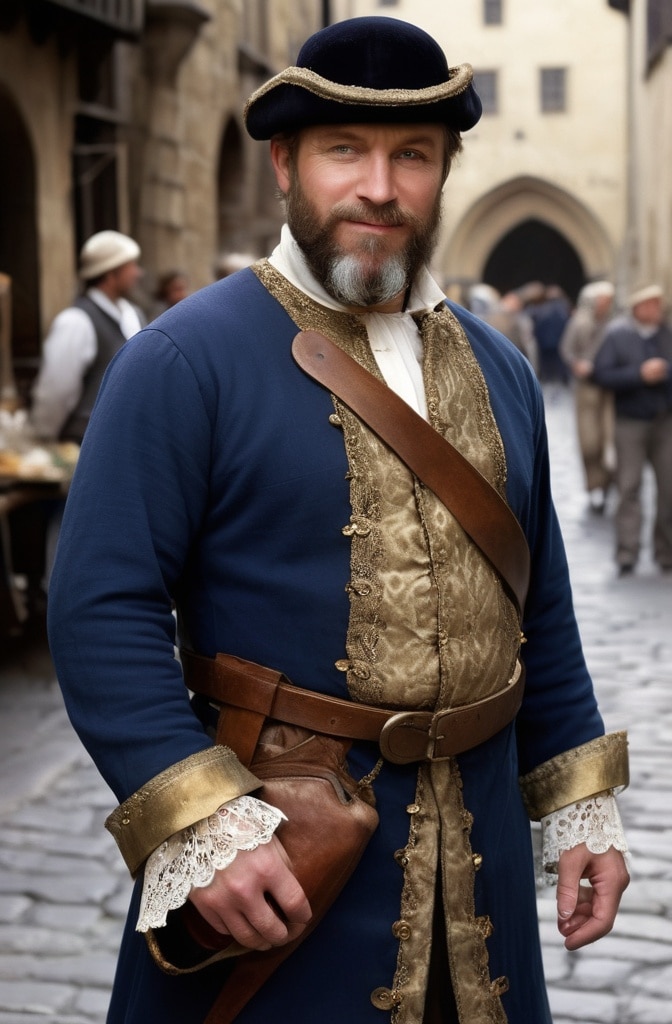
For this outfit, choose clothing with rich but not overly bright colors. A clean linen shirt under a fitted wool doublet or vest shows refinement without ostentation. Women might wear a kirtle (fitted dress) with a decorative apron overdress, demonstrating both functionality and style.
Details make this look shine add a merchant’s purse hanging from your belt, perhaps a quill tucked away somewhere, and if you’re really committed, keys to signal your importance.
The merchant class was all about subtle flexing of their status, so quality fabrics in understated designs work perfection.
4. Celtic Warrior
Before knights in shining armor, there were Celtic warriors with their distinctive style mixing practicality and tribal identity. This look combines rugged elements with surprising sophistication.
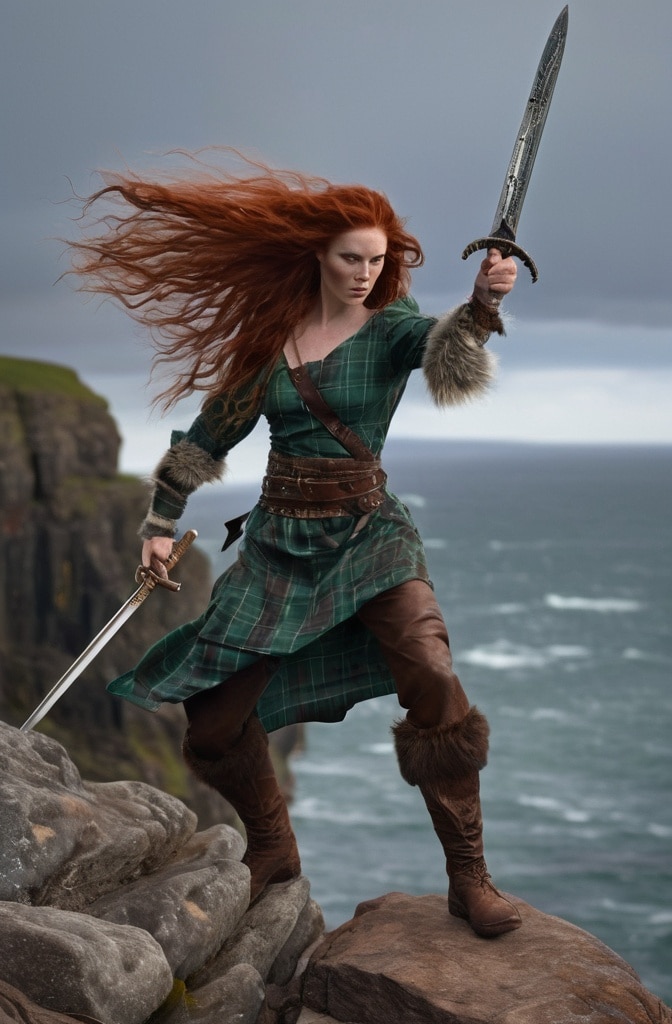
Start with a base of leggings and a simple tunic, then add a plaid or solid-colored cloak secured with an authentic-looking brooch at the shoulder. Celtic designs were intricate but not fussy geometric patterns and knotwork dominated.
What really sells this look is how you wear it with fierce confidence and a connection to nature. Add leather arm bracers, perhaps painted with woad-blue symbols.
Keep your hair either long and wild or braided in traditional celtic plaits. This style works incredibly for all genders and body types, and has the added advantage of being quite comfy for all-day wear at events.
5. Monk or Nun’s Habit
Sometimes simplicity makes the strongest statement. Religious figures in the medieval period wore clothing designed to show their rejection of worldly concerns, yet these outfits have become iconic.
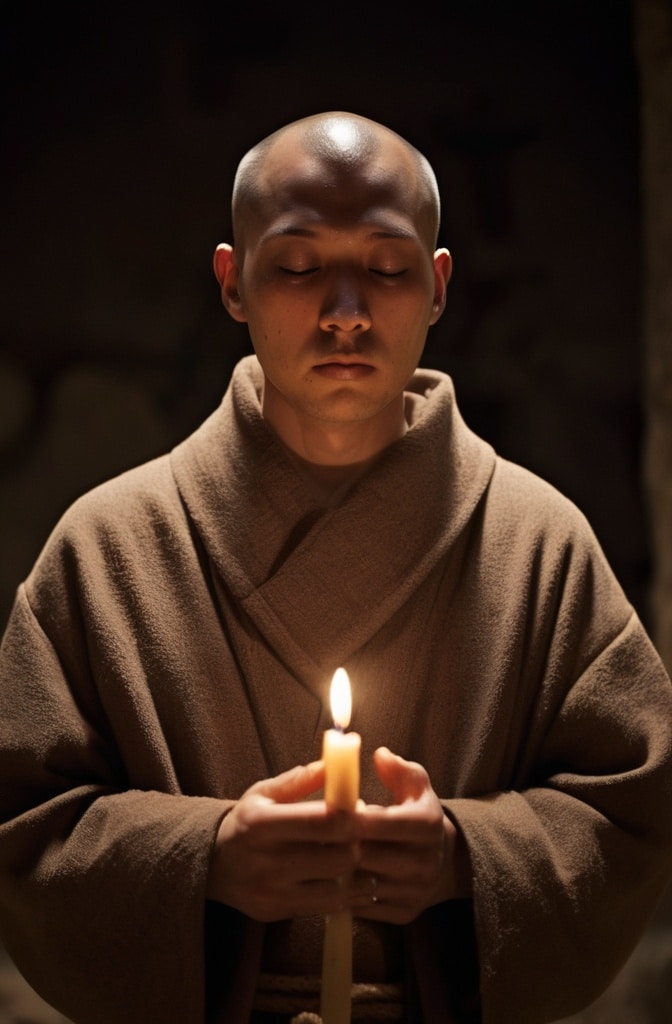
The basic habit includes a long robe (called a cassock) with wide sleeves, cinched with a simple rope belt. For monks, add a cowl (hood) that can be pulled up or let down. Nuns might add a wimple and veil to cover the hair and frame the face. The beauty of this outfit is in it’s clean lines and symbolic elements.
Color matters tremendously Benedictines wore black, Franciscans brown, Dominicans white and black. Research your specific order if you want historical accuracy.
The outfit requires almost no accessories except perhaps a wooden cross or simple rosary beads. Despite (or because of) its simplicity, this ensemble commands instant recognition and respect at any medieval gathering.
See Also: 16 Met Gala Dress to Impress Outfit Ideas
6. Court Jester
For the extroverts among us, few medieval roles offer as much freedom for expression as the court jester. Their clothing was designed to stand out in the often somber medieval court.
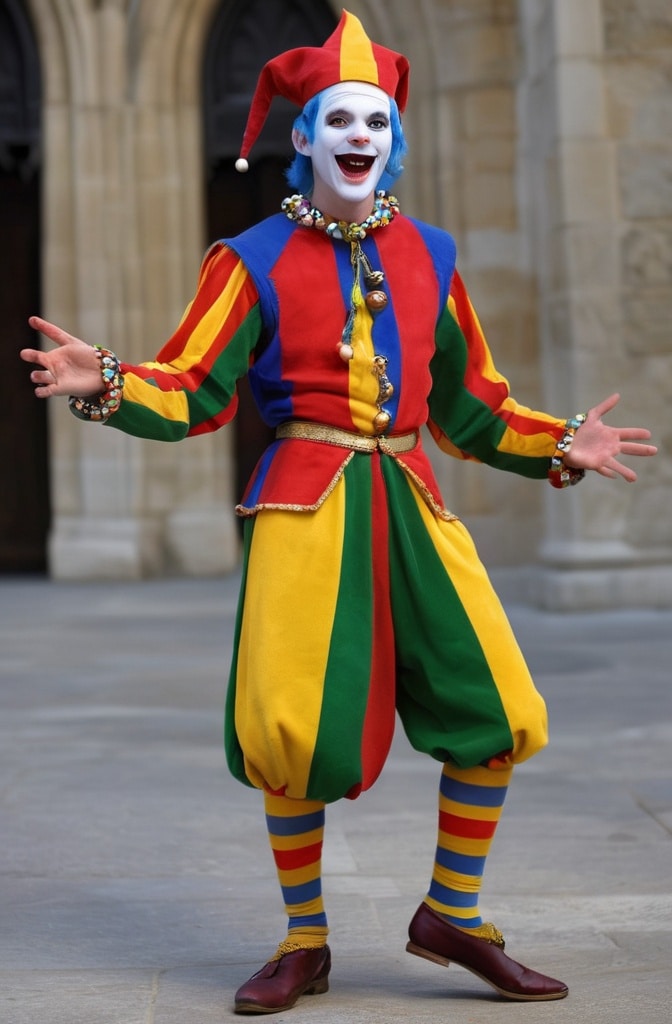
The classic jester outfit features bright, contrasting colors arranged in quarters or patterns think red and yellow, purple and green. The silhouette is distinctive: a tunic with pointed edges (sometimes with bells attached), close-fitting hose, and a three-pointed hat (also often belled).
What makes this outfit so much fun is the accessories. Add a jester’s scepter topped with a miniature version of the jester’s own head, bells for your shoes, and perhaps a small musical instrument like a hand drum.
While historically accurate jesters required wit and timing, the costume itself gives you permission to be the life of the party. The beauty of the jester outfit? If something looks a bit off or homemade, it only adds to the charm.
7. Plague Doctor
For those with a darker aesthetic, the plague doctor offers a hauntingly distinctive silhouette that instantly communicates medieval mysteries.
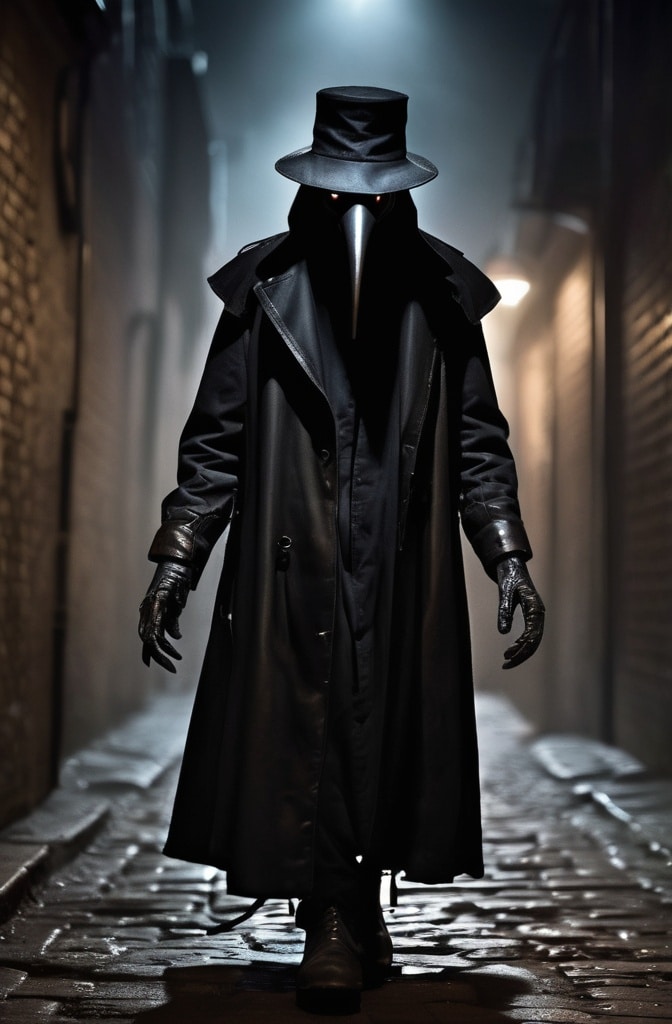
The foundation is simple: a long black robe or coat reaching to the ground, often made of waxed fabric which physicians believed would repel “miasma” or bad air.
Gloves and boots in dark leather complete the body covering. But it’s the mask that makes this outfit unforgettable a bird-like face with glass eye openings and a long beak filled (historically) with herbs and spices thought to purify the air.
Accessorize with a wide-brimmed black hat, a wooden cane for examining patients from a distance, and perhaps a lantern for those nighttime calls. While not the most cheerful medieval character, plague doctors remain one of the most visually striking and recognizable figures from the era, perfect for making a memorble entrance.
8. Blacksmith or Craftsperson
Medieval society valued skilled craftspeople, and their clothing reflected both practicality and a certain rugged dignity. This outfit works particularly well for people who prefer comfort and authenticity over flashiness.
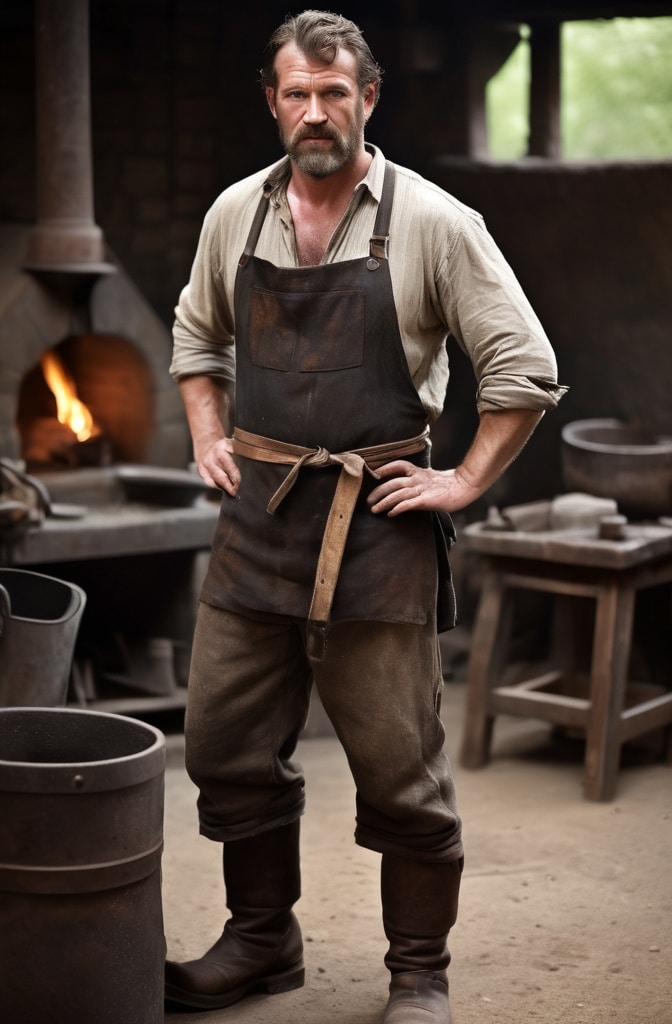
Start with sturdy pants or leggings in a natural color, paired with a simple linen shirt. Add a leather apron the defining piece of this ensemble which should show signs of wear and work. Real blacksmiths would have burn marks, while carpenters might have wood stains. These “imperfections” tell the story of your craft.
Accessories matter here: add a belt with attached tools specific to your trade, perhaps leather arm guards for blacksmiths or a measuring string for carpenters.
Your hands should look worked (temporary stains or callus-simulators can help). This outfit celebrates the medieval working class the people who quite literally built the world everyone else inhabited.
9. Byzantine Royalty
For those seeking truly spectacular opulence, Byzantine court clothing offers unparalleled richness and distinctive silhouettes unlike Western European styles.
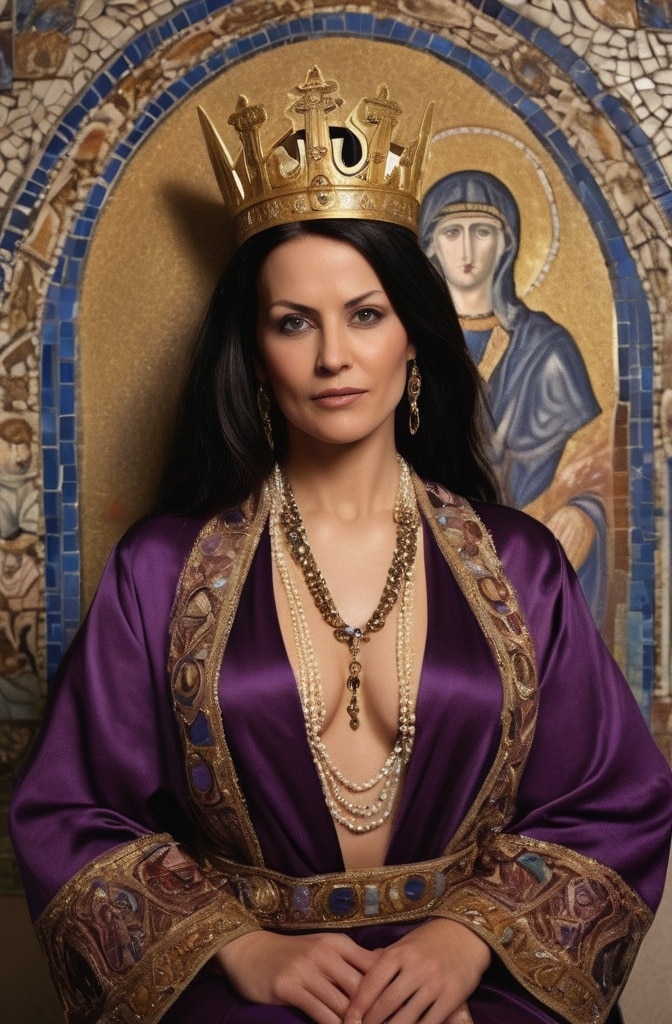
The Byzantine royal wore heavily embroidered robes in purple, red, and gold colors restricted to royalty by sumptuary laws. The distinctive feature is the incredibly detailed embroidery and jeweled embellishments, often featuring religious iconography or imperial symbols.
Women wore floor-length dalmatics (wide-sleeved tunics) over simple underdresses, while men might wear shorter versions with ornate leggings. Both genders wore elaborate crowns or circlets indicating their status.
What makes Byzantine dress so striking is it’s rigidity and formality it wasn’t designed for comfort but to communicate divine authority.
Accessories are crucial: large pendant necklaces, ceremonial scepters, and embroidered shoes elevate the ensemble. While challenging to create authentically, even simplified Byzantine outfits make an unforgettable impression at medieval events.
10. Tavern Keeper or Serving Wench
This popular costume balances practicality with a certain rustic charm that works for many body types and comfort levels.

For women, the foundation is a simple chemise with a bodice or corset over it, paired with a full skirt that allows movement. Men might wear a loose shirt with an open vest and comfortable breeches.
Both should add a generous apron the defining piece of this outfit which would historically have had multiple pockets for collecting payment and storing small necessities.
What brigns this outfit to life is the accessories and attitude. Add a ring of large iron keys, perhaps a small notebook for tracking tabs, and a friendly, knowing expression.
This character would have known everyone’s secrets and been the heart of medieval community life. The serving person could move between social classes freely, making this outfit perfect for social butterflies who want to interact with everyone at an event.
11. Knight in (Partial) Armor
Full plate armor is expensive and exhausting to wear but you can capture the knight aesthetic without busting your budget or your back.
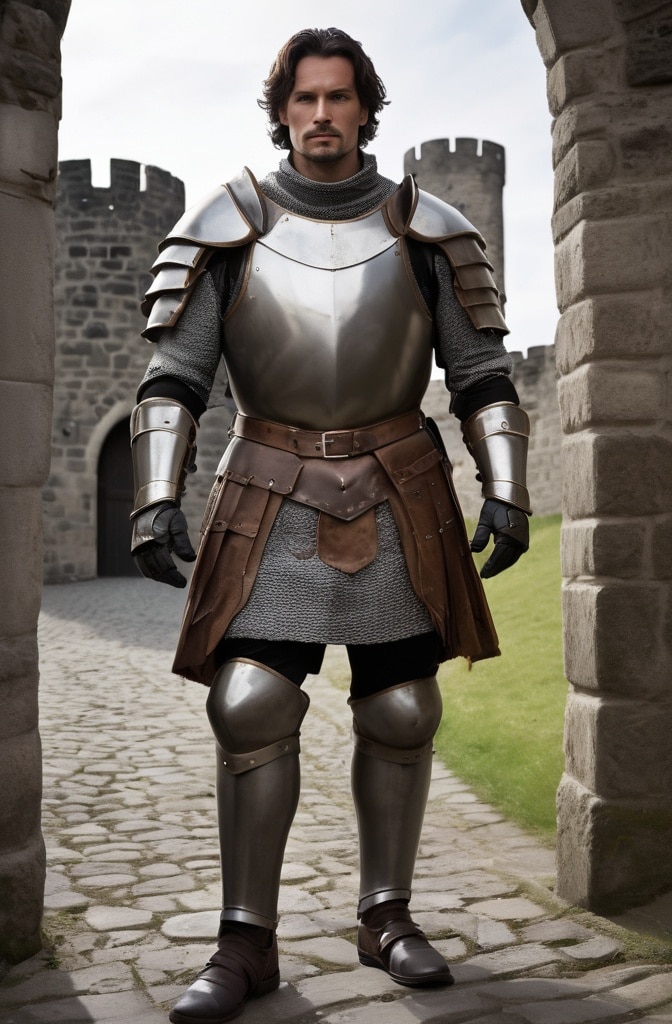
Start with a gambeson (padded jacket) or a simple tunic emblazoned with your “heraldry” (which can be as simple as geometric shapes in complementary colors). Add armor elements strategically: perhaps pauldrons (shoulder armor), a breastplate, or gauntlets.
By focusing on a few quality pieces rather than head-to-toe metal, you create a believable knight who’s either preparing for battle or relaxing afterward.
Don’t forget your belt knights wore substantial belts from which to hang their sword and other essentials. A cloak in your heraldic colors adds drama and practicality. This partial armor approach actually has historical precedent; knights didn’t lounge around in full plate armor during their off-hours.
See Also: 15 Fashion Icon Dress to Impress Outfit Ideas
12. Lady-in-Waiting
The lady-in-waiting occupied a facinating middle ground between servant and noble, and her clothing reflected this dual status.
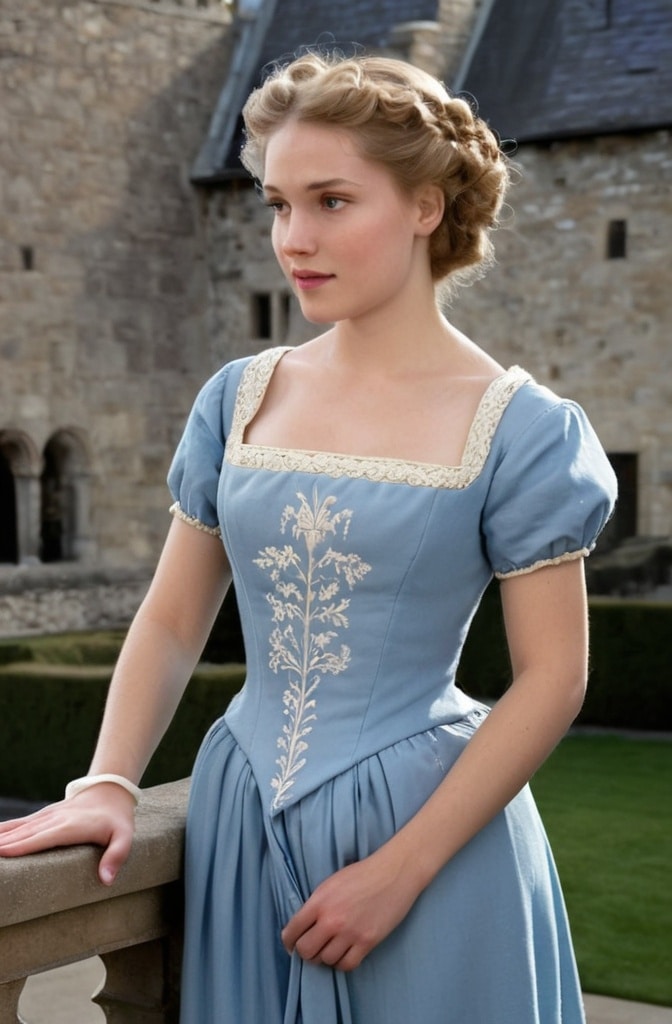
Her outfits would be high quality but slightly less ornate than the nobility she served. Choose a well-made gown in a subdued color like sage green, dusty blue, or warm brown. The silhouette should be elegant but allow for movement you’d need to attend to your lady’s needs quickly.
The defining accessories are practical items: perhaps a chatelaine (a decorative belt hook holding keys, scissors, and other tools), embroidery supplies, or a prayer book. Hair would be neatly arranged but not as elaborately as your noble mistress.
This outfit allows you to display refinement while still feeling comfortable and practical throughout a long event.
13. Medieval Physician
Before modern medicine, physicians relied on ancient texts, astronomy, and sometimes questionable practices and their clothing reflected this curious mix of scholarship and mysticism.
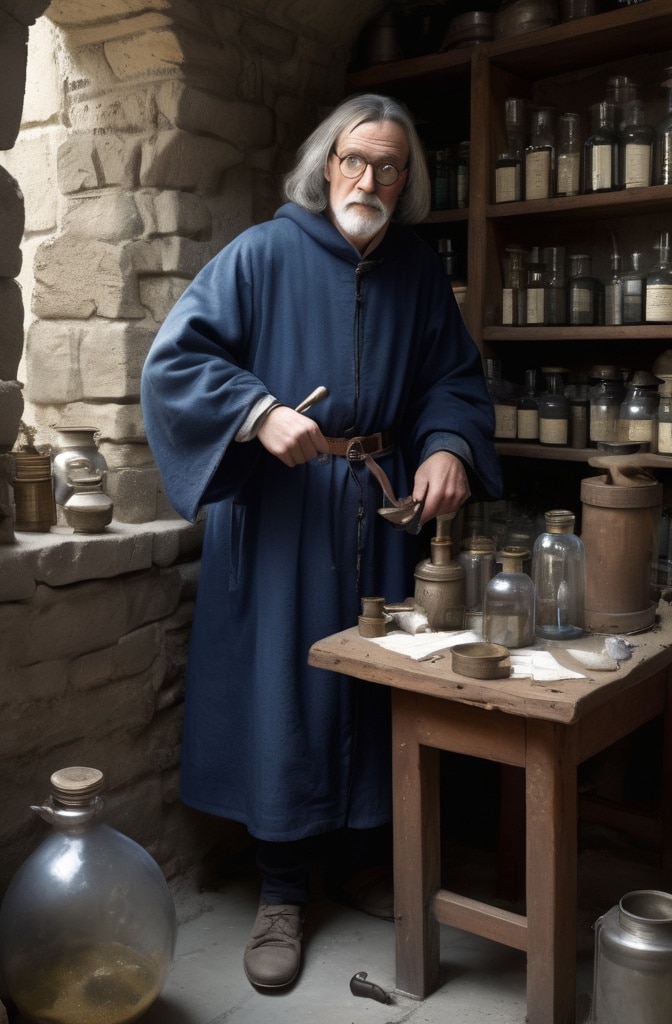
Start with scholarly robes similar to what university professors wore long, flowing gowns in dark colors like burgundy or forest green. Add a cap or hood appropriate to your level of education. The physician’s belt would hold the tools of the trade: small containers for herbs and potions, perhaps measuring devices or specialized tools.
What makes this outfit unique is the accessories that tell the story of medieval medicine: an astrolabe for casting horoscopes (crucial for medical treatment in that era), scrolls of medical texts, or a urine flask for diagnostic purposes (this could just be a decorative prop!).
This outfit works wonderfully for those interested in history of science and medicine, giving you plenty to discuss with other event-goers.
14. Viking Raider
Though technically from the early medieval period, Viking aesthetics have remained incredibly popular for good reason they combine practicality with distinctive cultural elements.
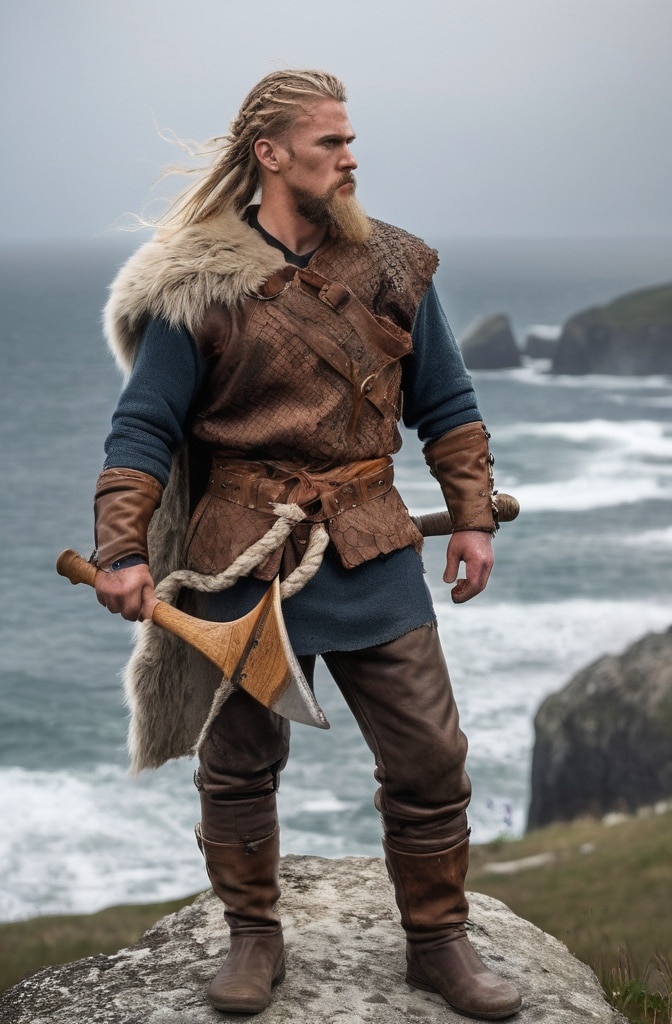
Begin with a simple linen tunic, ideally with tablet-woven trim at neck and wrists. Layer with a wool apron dress (for women) or a leather jerkin (for men). Pants should be fitted but not tight, gathered at the ankle above sturdy leather boots or shoes.
The magic of Viking outfits is in the jewelry and accessories. Add brooches at shoulders to secure fabric layers, arm rings or bracelets that signal wealth, and perhaps a drinking horn hung from your belt.
For serious authenticity, incorporate actual fur elements and leather work with period-appropriate patterns. Viking outfits work exceptionally well for those with a more rugged appearance or who want freedom of movement at medieval events.
15. Wandering Minstrel or Bard
Music and storytelling were essential parts of medieval life, and traveling performers had clothing that was practical for the road yet distinctive enough to command attention when performing.
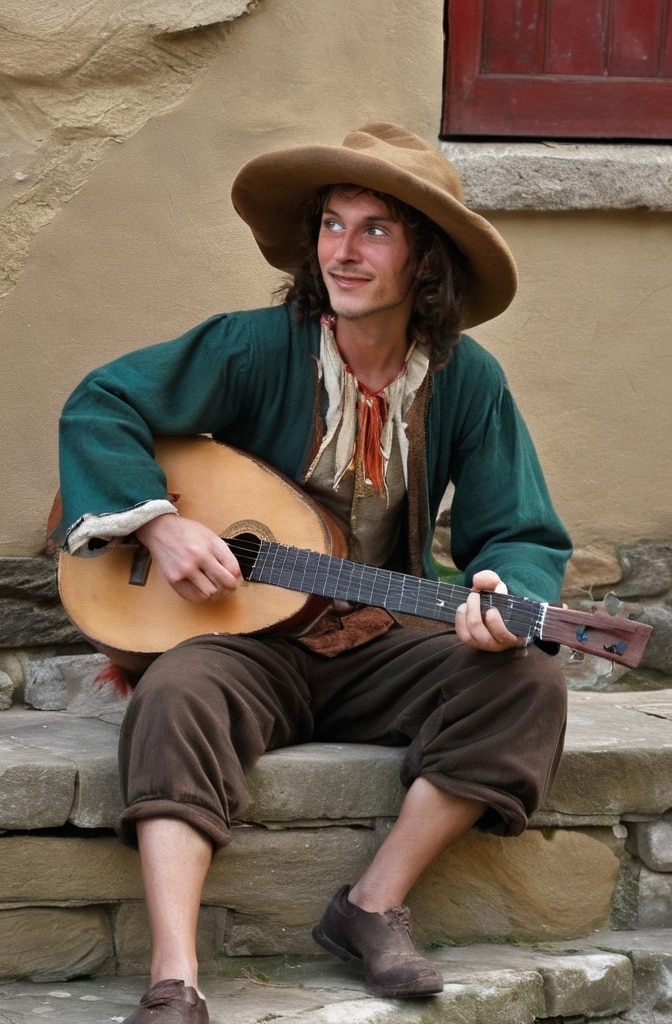
A minstrel’s outfit would include comfortable but colorful clothing perhaps patched or mended in visible ways that tell the story of life on the road. Choose pieces that facilitate movement: loose sleeves for playing instruments, sturdy but lightweight fabrics that travel well.
The defining accessories make this outfit recognizable: a musical instrument (lute, hand drum, or recorder being most portable), perhaps a hat with a feather, and a brightly colored sash or scarf that could double as a prop during performances.
This outfit works wonderfully for social types who enjoy being the center of attention and has the practical advantage of explaining why you’re wandering from group to group at an event.
16. Alchemist or Mystic
The medieval period was filled with those seeking to transmute lead into gold or commune with metaphysical forces, and their clothing reflected this boundary-crossing role.
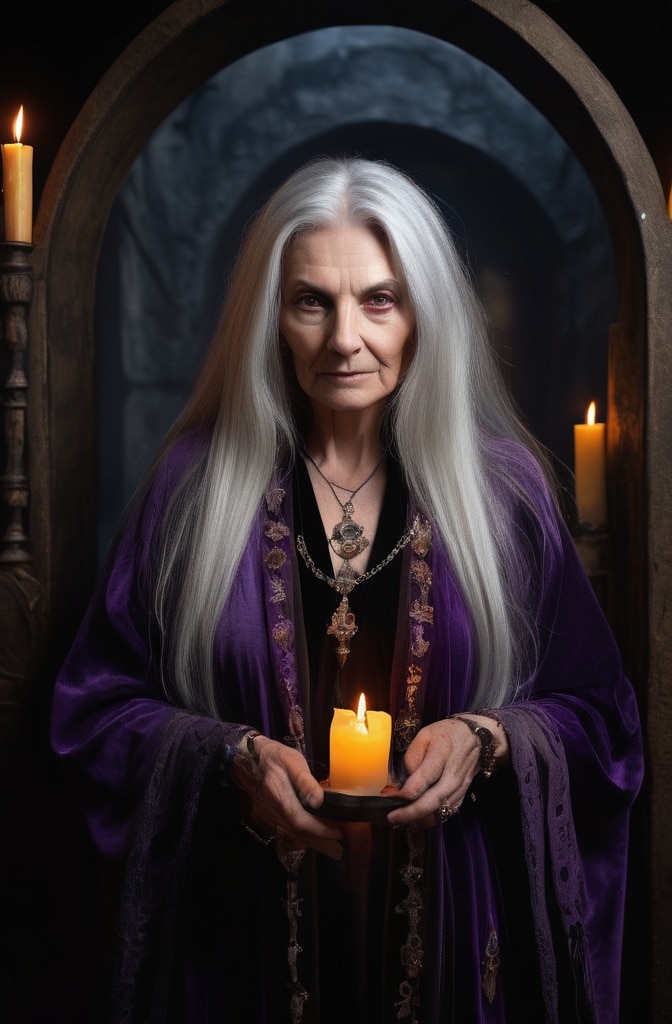
Start with scholarly dark robes similar to a physician, but add elements that suggest mystical workings: perhaps symbols embroidered along hems or sleeves, unusual closures like bone or horn toggles instead of mundane buttons. Colors would typically be midnight blue, deep purple, or black colors associated with the night sky and cosmic mysteries.
The accessories tell the story: glass vials filled with colored liquids, a leather-bound book of “secrets,” perhaps crystals or unusual stones worn as jewelry.
This outfit works particularly well for introspective types who enjoy creating an aura of mystery and having deep conversations in the corners of medieval gatherings.
17. Peasant with a Twist
Let’s be honest most people in medieval times were common folk working the land. But that doesn’t mean their outfits can’t be interesting and comfortable.
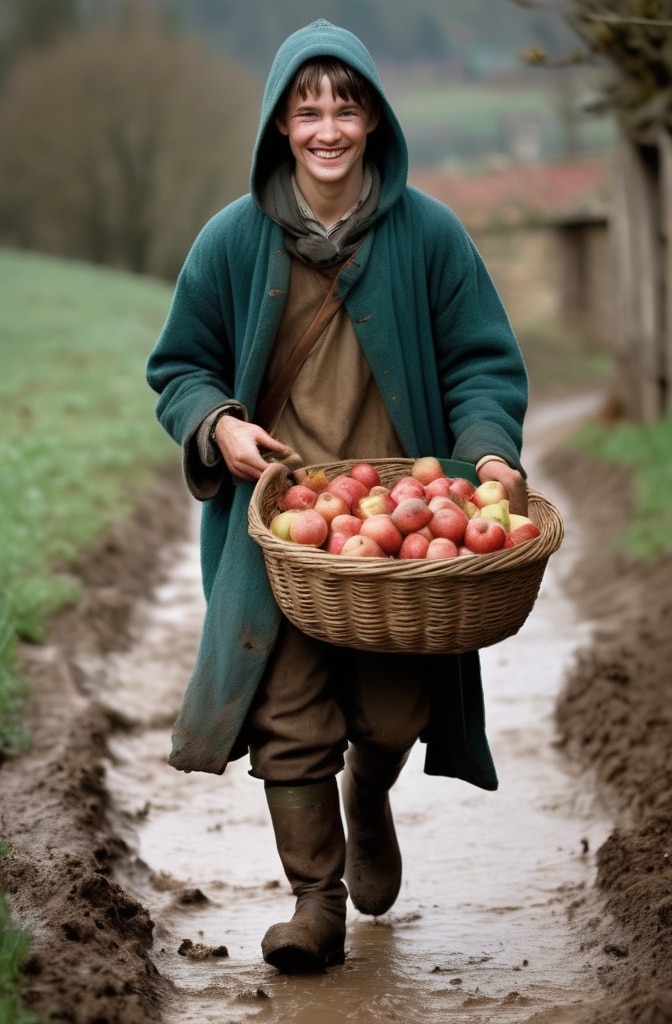
Begin with the peasant basics: simple linen shirt or chemise, plain wool tunic or dress in natural colors, and sturdy cloth head covering. Where this outfit gets interesting is in the personalization. Perhaps your character has traded for one remarkable piece a beautiful belt, an unusual pendant, or a colorful woven band.
The beauty of peasant garb is its practicality and comfort. You’ll be able to enjoy the entire event without costume fatigue.
Add character with small touches that tell your story perhaps you’re a peasant who found a noble’s lost ring, or who crafts exceptional woodcarvings traded with travelers for exotic trinkets. The humble outfit becomes a canvas for your character’s unique journey.
Creating Your Medieval Ensemble
Whatever medieval persona speaks to you, remember these general tips:
- Layers are authentic and practical. Medieval clothing was built in layers, allowing garments to be added or removed as needed.
- Natural fabrics always look better than synthetics, even from a distance.
- Footwear can make or break your outfit avoid modern shoes at all costs.
- Small details and accessories often tell the story better than grand gestures.
- Consider your event location and weather authentic or not, you want to be comfortable enough to enjoy yourself.
Above all, wear your chosen medieval outfit with confidence. The most impressive costume is the one worn by someone fully embracing their character from another time.
Whether you’re royalty or rogue, physician or performer, the magic of medieval dress is in how it transforms not just your appearance, but how you move through the world.
So go forth, modern time-traveler, and make your mark on these reimagined medieval realms. The past awaits your presence, and with these outfit ideas, you’ll certainly impress.

